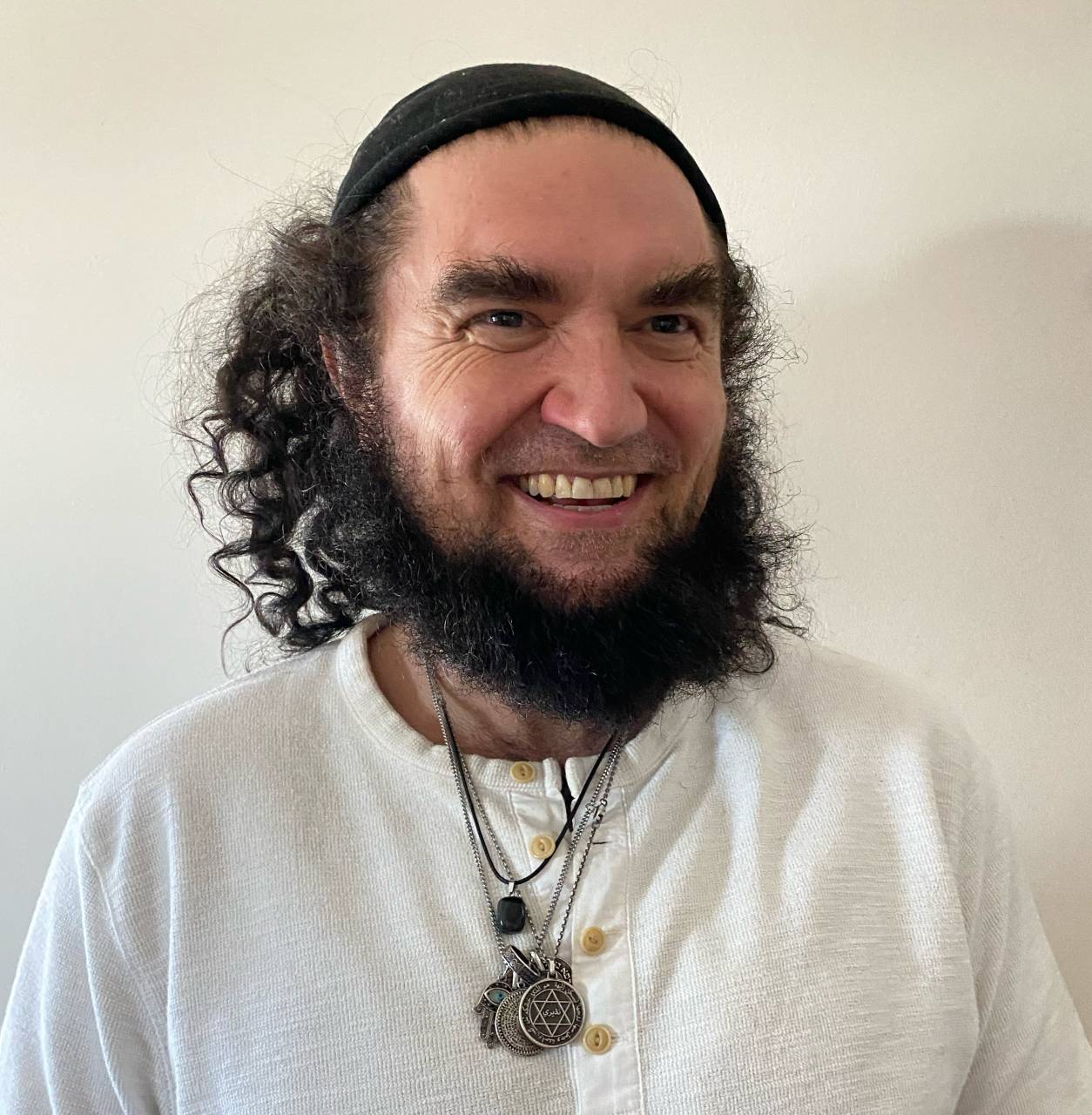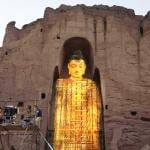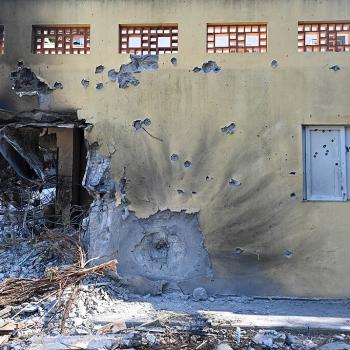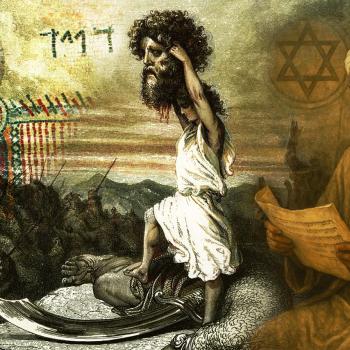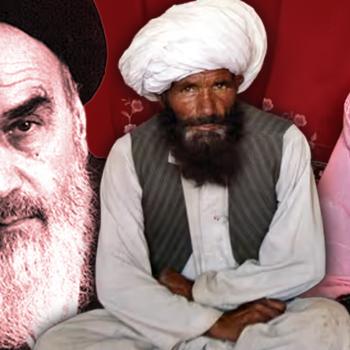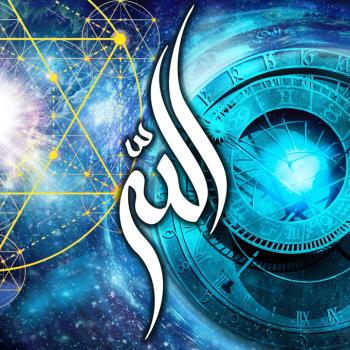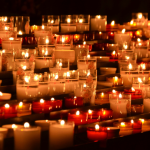
In the historical study of both Islamic and Christian Origins, many early and common sectarian doctrinal features were, within short order, deemed heterodox or even heretical. One of the most prominent examples, common to each of these faith communities, is the doctrine of reincarnation. While this concept was present within an array of early sectarian expressions, the refutation or suppression of this doctrine nevertheless took top priority amongst the cementing religious establishments.
Until the sixth century of the common era, Christianity was replete with sectarian and gnostic expressions which held tightly to a belief in reincarnation. It was not until the second Council of Constantinople in 553 CE, that the Church prohibited the previously widespread Christian belief in reincarnation.
Judaism, for its part, continues to retain the ancient doctrine of Gilgul Ha’Neshamah, the Return of the Higher Spirit (Neshamah being a higher state of the Spirit than Ruach or the Soul-Nefesh). With very few exceptions, such as Sa`adia ben Yosef Gaon (892 – 942 CE), rabbis have not only embraced this within the teachings of Chassidism and Kabbalah in general, but even as the plain interpretation of certain Biblical passages, such as the seemingly strange verse from Job: “naked I came from my mother’s womb, and naked shall I return there” (1:21).
As well, there are several strange characters within the Biblical account that while one could very simply take their references as indicating inexplicably long life spans, a simpler explanation could be that the references were to a gilgul of a previously-incarnated Biblical figure.
Certainly within the `Aggadic literature of Midrash, the later reference to King Og of Bashan not only after the Great Flood of Noach, but millennia later, could indicate a bizarrely, quasi-immortal character who survived by holding on to the outside of the ark (Talmud, Niddah 61a; Pirkei d’Rabbi Eliezer 23; Rashi on Talmud, Zevachim 113b). It could also, however, indicate that the figure was being said to have returned in another incarnation. The `Aggadic tale could thus, then be understood as naturally mythic, metaphorical, or even that the tale – being assumed to be true – could have nevertheless still resulted in a normal death of the character, and their subsequent return.
Indeed, one of the most tried and true Christian critiques of the Qur’an narrative are the seeming anachronisms of Miriam the Daughter of `Imran, or the Pharaonic-Era reference to Haman as the court advisor of Firaon from the Megillat Esther (29:39; 40:24; 28:8; 28:38). Quite obviously, if these are understood as literal references, then the Qur’an is not only wrong, but it is embarrassingly so.
For example, the Quran calls Mary “the daughter of Imran” and states that she was the “sister of Aaron” (19:28). Her mother too is mentioned in the Qur’an only as the wife of Imran. Yet the narrative seems to conflate the Bronze Age Miriam with the Gospel Miriam, in saying that her mom prayed for a child and eventually conceived (3:35).
It would be bizarre in the extreme to think that contemporaries of Muhammad would not have immediately noted such glaring anachronisms – if intended as literal references to historically static individuals. Certainly, any opponent of Muhammad would have cackled that the prophet of Islam would have expected them to think of him as an authority on anything remotely related to Biblical characters and tales if he could not even understand when Miriam the sister of Aaron was supposed to have lived, or that Haman was the adviser to the Persian King Xerxes (519 – 465 BCE), rather than some unnamed Pharaoh (for instance, mid-16th century BCE).
The fact that these would-be “errors” are so obvious and so extreme, in the gaps of over a millennium in each case, shows us that the Qur’an knew exactly what it was doing when it made these statements. It was quite deliberately calling us to understand that these were incarnations of the same figure, albeit in different lifetimes. As such, they are deliberately stated “out of place” and “out of time” with the traditional and widely-known stories.
The Qur’an clearly had access to knowledge of stories within the barely-codified Talmud. Some of the most famous passages of the Qur’an are in fact from the Talmud – something I preliminarily address in the short tract
Similarly, within Islam, essentially every variety of Imamite and proto-Shi`i expressions held strongly to a similar view. Interestingly, out of all of the sects of Islam that still exist to this day the one which has maintained a historical connection and unbroken lineage to the Ahl al-Bayt of Muhammad’s family has in fact held a firm belief in reincarnation. Even a partial treatment of such sectarian narrations, however, require a separate discussion, in order to keep this discussion focused.
Reincarnation Was Once A Common Belief in Islam
The first true Sufi mystic I ever met was an enigmatic man, who in the late 1990s held a lengthy conversation with me during my shift at Borders Books and Music. While I stocked books on Feng Shui, kneeling down to the bottom shelf, I saw a very dark-skinned man dressed all in impeccably clean loose white African pants, shirt, and tight doily-like kufi. Though the details of this profound first of several encounters are largely beyond the scope of this discussion, one thing that would later strike me the hardest was his passing response to me asking him if he had ever heard of the “author” named Bawa Muhaiyaddeen. He said with something of a smile, “ah yes, Bawa Mu-ha-i-a-Deen!” correcting my mispronunciation. “Bawa and I go way back. I was his teacher.”
For me, this meant very little. Another Sufi Muslim had only recently suggested to me that I use my employee discount to order some of Bawa’s books from the Bawa “Fellowship” in Philadelphia, Pennsylvania. I knew literally nothing else about him, other than that he was – like me – vegetarian. I was not aware of how utterly preposterous it should have sounded to me, for such a young-looking man to claim to have been the then-deceased Bawa’s teacher – who was certainly no proverbial “spring chicken” by the time of his bodily death in 1986.
I took the advice of both individuals and ordered everything from Bawa I could get my hands on. It did not take long to learn that Bawa’s open and frank discussion of transmigration and reincarnation was beyond the pale of heterodoxy in the Muslim Ummah. No matter what Muslim community I encountered, in the United States or in the Middle East, I did not find a single one who did not view even the slightest bit of belief in reincarnation as tantamount to kufr.
In spite of how much this doctrine was anathema to the Muslim World, this was not always the case. In fact, most of the earliest partisans of the Ahl al-Bayt – Muhammad’s family – were staunch believers in reincarnation. Most of these groups were later denounced as “extremists” or gulat for such positions.
Apart from such partisans of the Ahl al-Bayt, and the later branches of such found in the Ismai’iyyah and the Druze faith, the renowned Masnawi of the great mystic, Jalaluddin Rumi (1207 – 1273 CE), describing the process of evolution through reincarnation – from mineral and plant to non-human animal and human being – then to the Mala’ikah, the “Angels,” who are pure Consciousness…
I died as mineral and became a plant,
I died as plant and rose to animal,
I died as animal and I was human.
Why should I fear?
When was I less by dying?
Yet once more I shall die as human,
To soar with Angels blest;
But even from Angelhood I must pass on…
The question of reincarnation is fundamental to what we might regard as the “Meaning of Life” and indeed, the meaning of nearly everything found articulated within the Qur’an. If the Qur’an was not only not against the doctrine of reincarnation, but in fact actively speaking of it throughout its Suwar, then this, as it is said, changes everything – at least as far as the teachings of the Historical Muhammad are concerned.
In a famous Sufi narration, `Ali bin Abi Talib, the son-in-law of Muhammad, said “Humankind is asleep, but when they die, they wake up” (ٱلناس نائم فإذا مات إنتبهوا, an-Nas niyam fa-idha matu intabahu). Such passages seem quite reminiscent of Buddhist and even Taoist concepts – the later from the Leizi (Lei Tzu) and Zhuangzi (Chuang Tzu), regarding the marveling of spirits that they ever clung to material life, or the famous Zhuangzi dream of a “Butterfly” – a clear mystical metaphor for the very metamorphosis of the spirit of human consciousness. Or was it the Butterfly’s dream of being Zhuangzi, after all?
Muhammad, in an equally famous Sufi narration, as that of `Ali, instructed the Mu’minin, the Believers, to “Die before death” (موتوا قبل ان تموتوا, mutu qabla an tamutu), indicating that death itself serves as an awakening to a state in which we are severed in material life and incarnation.
“In reality,” the Sufi mystic Ibn `Arabi (1165 – 1240 CE) said, “the entire physical existence of the Prophet [Muhammad] passed thus, as a dream in a dream.”
He added that one must “know that you are Imagination, and all that you perceive and about which you say ‘that’s not me,’ is Imagination.” Thus, he continued, “the whole of Existence is Imagination within Imagination.”
As the Qur’an says: “Tell them: ‘The death from which you flee will certainly overtake you. Then you will be returned to IT Which is COMPLETELY AWARE of the Unseen World (الۡغَيۡبِ, Al-Ghayb) and what is Witnessed [with the physical senses] (الشَّهَادَةِ, Ash-Shahadah). Thereupon IT will let you know ALL that you used to DO and all of your WORKS [in all your incarnations].”
قُلۡ اِنَّ الۡمَوۡتَ الَّذِىۡ تَفِرُّوۡنَ مِنۡهُ فَاِنَّهٗ مُلٰقِيۡكُمۡ ثُمَّ تُرَدُّوۡنَ اِلٰى عٰلِمِ الۡغَيۡبِ وَالشَّهَادَةِ فَيُنَبِّئُكُمۡ بِمَا كُنۡتُمۡ تَعۡمَلُوۡنَ
Confused yet?
There’s probably a strong reason that institutional religious hierarchies of Christianity and Islam have opted for a literal and frankly bizarre interpretation of the material resurrection of rotten and decayed corpses, rather than imposing upon their donors – or perhaps it would be less cynical to say “congregants” – such troublesome and perplexing notions. It is far easier to simply tell members of a faith community that complicated references to reincarnation are instead to some profound, supernatural event in the impossibly distant future.
Again, the more jaded among us might see that as something akin to “shut up, stop asking questions, and pay your religious taxes.”
The Hadith of Noah and the 450-Year-Old Woman
An Islamic hadith, attributed to Muhammad, relays a tale of a woman who told the prophet Noah that her son died young. Shockingly, to the listeners within Muhammad’s community, this “early death” occurred at the age of 450, according to the woman. While obviously a fictional account, the story is meant to impart a message other than historical documentation (as myths are want to do).
In this hadith, Noah replies to the woman that there will come a nation whose lifespan will be 60-70 years old. The woman replied, “that is so little time! If I will be in that Ummah then I will never raise my head from prostration” (Mustadrak alas’ Sahihayn, by Imam al-Hakim, Hadith traditionally ranked as Sahih, Volume 6, 216)
The point of the hadith is obvious, we humans of the generations following so long after the Qur’anic and Biblical “Noah” have much less time than told in this tale. As such, we should have all the more reason to never cease from acts of `ibadah (Hebew: `avodah) meaning worship, work or even slavery to the Creator.
A point is often glossed over in this well-known and oft-quoted hadith: since the woman in the story was herself clearly intended to be over 450 years old. It is thus clear that she cannot mean that she might be of such a foretold Ummah, with so narrow a lifespan as that Noah foretold in this story. She, as we can see, had already passed that age – evidenced by the fact that the son she bore had died much older than that. Whether factually recording an incident of history, or not makes little difference.
The hadith documents what was a socio-religious norm of perception on reincarnation or tanasukh in Islam. Thus, the hadith can only be referring to reincarnation – whereby she would have a new life in the future, wherein she would only live to such a much shorter lifespan. This idea is merely said in passing and without notice of any apparent controversy in it being framed in such a manner. That would indicate that the composer or transmitter of the hadith lived in a time and community in which the concept of tanasukh had not yet been theologically disavowed and doctrinally verboten.
The simplest explanation is obvious, the Hadith is referencing reincarnation.
Multiple Deaths in the Qur’an
The Qur’an makes it clear that the fallen comrades in arms of the Mu’minin were not dead, just because their material bodies had been slain. “They are living, though you do not perceive it” (2.154); and “No! They live! Finding their sustenance in the presence of their Lord; they rejoice in the bounty provided by Allah” (3:169-170).
As well, “Allah brings the dead to life” (2:73); “give[s] life to the dead” (36:12); and has “the power to give Life to the dead” (75:40). It seems similarly clear when the Qur’an says: “You were dead and [Allah] gave you life. Again [Allah] will cause you to die and again bring you to life, then you will be brought back to [Allah]” (2.28)
The words “you were dead” can only mean that they had lived before becoming dead. And the words “in the end shall gather you unto [Allah] could very well mean the attainment of the Vedic concept of moksha (release) from the “whirlwind” of samsara. Indeed, the Qur’an accurately describes this cycle of Samsara – of death, life, death, trials of the grave, possible ascension or further punishment and eventual rebirth to be the very cycle of the “Pit” of Jahannam, from which we are to escape.
With these ayat in mind, we would be reasonable to ask: what if, all along, the Qur’anic references to death, torment in the grave, and “resurrection” were always about what Jewish mystics regarded them as: references to death, life, death, and gilgul of the higher spirit within new “skins.”
“For, verily, those who are bent on denying the truth of Our Messages We shall, in time, cause to endure fire: [and] every time their skins are burnt off, We shall replace them with new skins, so that they may taste suffering [in full] Verily, Allah is almighty, wise” (4:56).
إِنَّ ٱلَّذِينَ كَفَرُوا۟ بِـَٔايَـٰتِنَا سَوْفَ نُصْلِيهِمْ نَارًۭا كُلَّمَا نَضِجَتْ جُلُودُهُم بَدَّلْنَـٰهُمْ جُلُودًا غَيْرَهَا لِيَذُوقُوا۟ ٱلْعَذَابَ ۗ إِنَّ ٱللَّهَ كَانَ عَزِيزًا حَكِيمًۭا
“We created you from [the Earth] and into it We will return you [to it] and from it shall We bring you out once again” (20:55).
مِنْهَا خَلَقْنَـٰكُمْ وَفِيهَا نُعِيدُكُمْ وَمِنْهَا نُخْرِجُكُمْ تَارَةً أُخْرَىٰ
The Orthodox Muslim might suggest that this “bring you out once again” refers to the physical body being brought out. But this imagines that the Creator views our true self to be physical matter. If Allah “brings you out” and the “you” is a rotten corpse, presumed to have been miraculously regenerated and reanimated, then this indicates an essentialness to the “self” of the body, rather than the body being merely a “coat of skin” as the Torah Kabbalistically tells of the incarnation of the Primordial Adam in the `Olam `Asiyah, the World of Action (Sefer Berashit/Genesis 3:21).
“And Allah has produced you from the Earth, Growing (gradually), and in the End [Allah] will return you into the [Earth], and raise you again and again [thereafter]” (71:17-18).
وَٱللَّهُ أَنۢبَتَكُم مِّنَ ٱلْأَرْضِ نَبَاتًۭا ثُمَّ يُعِيدُكُمْ فِيهَا وَيُخْرِجُكُمْ إِخْرَاجًۭا
“Nor will they there taste death, except the first death; and [Allah] will preserve them from the penalty of the Pit of Jahannam” (44:56).
لَا يَذُوقُونَ فِيهَا ٱلْمَوْتَ إِلَّا ٱلْمَوْتَةَ ٱلْأُولَىٰ ۖ وَوَقَىٰهُمْ عَذَابَ ٱلْجَحِيمِ
We see here reference to a “first death.” This is not the only such reference in the Qur’an. We also read in the very next ayah (57) that this is the “Supreme Achievement” (Al-Fawzu al-`Azimu, ٱلْفَوْزُ ٱلْعَظِيمُ), a phrase repeated in Surat As-Saaffat (37), where it says “all who strive” should strive therefore – to only experience death once!
“Will we not be dead, except our first death, and we will not be punished? Truly, this is the Supreme Achievement! For the like of this let all strive, who wish to strive.” (37:58-61)
أَفَمَا نَحْنُ بِمَيِّتِينَ إِلَّا مَوْتَتَنَا ٱلْأُولَىٰ وَمَا نَحْنُ بِمُعَذَّبِينَ إِنَّ هَـٰذَا لَهُوَ ٱلْفَوْزُ ٱلْعَظِيمُ لِمِثْلِ هَـٰذَا فَلْيَعْمَلِ ٱلْعَـٰمِلُونَ
Indeed, elsewhere, the Qur’an tells us of those who have spoken of two lives and deaths, bewailing the cycle of death and rebirth, wondering if there is “any way out.”
“They will say: ‘Our Lord! Twice you have caused us death and twice you have given us life. We now confess our wrongs. Is there any way out [‘of this cycle]?” (40:11)
قَالُوا۟ رَبَّنَآ أَمَتَّنَا ٱثْنَتَيْنِ وَأَحْيَيْتَنَا ٱثْنَتَيْنِ فَٱعْتَرَفْنَا بِذُنُوبِنَا فَهَلْ إِلَىٰ خُرُوجٍۢ مِّن سَبِيلٍۢ
The Qur’an further discusses those who vow to not repeat their errors when they return to the world of physicality. In spite of their claims, the Qur’an says these are merely words, but once back within the whirlwind of rebirth, with memories severed, they will very often repeat their errors:
“When death comes to one of them, he says, ‘My Lord, send me back again. so that perhaps I may act rightly regarding the things I failed to do!’ [But] No! These are just words he utters. Before them there is an interspace until the Day they are Resurrected” (23:99-100).
حَتَّىٰٓ إِذَا جَآءَ أَحَدَهُمُ ٱلْمَوْتُ قَالَ رَبِّ ٱرْجِعُونِ لَعَلِّىٓ أَعْمَلُ صَـٰلِحًۭا فِيمَا تَرَكْتُ ۚ كَلَّآ ۚ إِنَّهَا كَلِمَةٌ هُوَ قَآئِلُهَا ۖ وَمِن وَرَآئِهِم بَرْزَخٌ إِلَىٰ يَوْمِ يُبْعَثُونَ
The Qiyamah “Resurrection” as Classical Reincarnation
A full survey of Qur’anic references to the Qiyamah or Resurrection requires a lengthier and dedicated treatment. For now, a few relevant passages will suffice to make the point that the Qur’anic Yom al-Qiyamah primarily refers to the Day in which we are individually raised to rebirth. We know that this is not a terrestrial day, as it is simply illogical to imagine the world beyond the material to be governed by Earth’s 24-hour cycle of night and day.
Moreover, the Qur’anic “Resurrection” is not described as a one time thing, but as being akin to the rising of the sun on a new day. In other words, it is described as cyclic in nature.
“You cause the night to overtake the day, and you cause the day to overtake the night; You bring the Living out of the dead, and You bring the dead out of the Living; and You give sustenance to whom You please, without measure” (3:27).
تُولِجُ ٱلَّيْلَ فِى ٱلنَّهَارِ وَتُولِجُ ٱلنَّهَارَ فِى ٱلَّيْلِ ۖ وَتُخْرِجُ ٱلْحَىَّ مِنَ ٱلْمَيِّتِ وَتُخْرِجُ ٱلْمَيِّتَ مِنَ ٱلْحَىِّ ۖ وَتَرْزُقُ مَن تَشَآءُ بِغَيْرِ حِسَابٍۢ
To make sure the analogy is not lost upon the listener, the Qur’an describes the “Resurrection” as being akin to the water cycle itself.
“It is Allah Who sends forth the [Spirit of the] Winds (Ar-Riyyah, ٱلرِّيَـٰحَ), so that they animate, enliven, arouse (fatuthiru, فَتُثِيرُ) and they Raise up Purified and in Glory (Sahaban, سَحَابًۭا). So [conversely] We drive [the wrong-doers (fasuqnahu, فَسُقْنَـٰهُ) to a Dead Land (Baladin Mayyitin, بَلَدٍۢ مَّيِّتٍۢ), and revive the Land (Al-Ardh, ٱلْأَرْضَ) therewith after death: even so [will be] the Rebirth” (35:9).
وَٱللَّهُ ٱلَّذِىٓ أَرْسَلَ ٱلرِّيَـٰحَ فَتُثِيرُ سَحَابًۭا فَسُقْنَـٰهُ إِلَىٰ بَلَدٍۢ مَّيِّتٍۢ فَأَحْيَيْنَا بِهِ ٱلْأَرْضَ بَعْدَ مَوْتِهَا ۚ كَذَٰلِكَ ٱلنُّشُورُ
The term here is not Qiyamah, though it is similarly rendered in translation as “Resurrection.” Instead, however, the term nushuru (نشور) means revival but is synonymous with anbi`athu (انبعاث) which is rendered as “resurrection” but also literally as “rebirth” and even “emission.”
When Arabic speakers discuss the linguistic mastery of the Qur’an, this is easily lost in translation. Indeed, most Qur’anic translations are utterly unimpressive at best. Here then, we see nearly every word of this ayah is a pun, with a dual spiritual and physical double entendre.
The surface meaning appears to literally be referencing the elements and the blowing of wind to send rain clouds to revive barren land. But each word here has another meaning, which when translated alternatively, refers to morality, immorality, death and rebirth. To accomplish this dual meaning, “qiyamah” is not employed here, while “rebirth” is used instead.
As well, the Arabic root s-b-h of the word Subhan means “Purified One” and alludes to “a sense of swimming” or “being immersed in something” or “traveling far” which renders the common Arabic expression “Subhanallah.”
The term linguistically indicates immersion in a vast ocean or expanse. From this, the translators and mufassirun exegetes render the common Arabic reference to “clouds” here. In terms of the state of Subhana Allah, as Shaykh Bawa Muhaiyaddeen terms it, this highlights the Divine Abundance and compares us to something bobbing away in an Ocean or blowing away in the Wind, at the Mercy of Divine Forces, not in control of our own course.
In what I would regard as a Kabbalistic tafsir on Qur’an, Surat Al Imran 3:185, related to the life, death, the Spirit World (Barzakh), and rebirth, we read the following:
“Every ego-consciousness (nafs) will taste death. And you will only receive your full reward on the Day of Resurrection [when your higher soul, your neshamah (Hebrew: נשמה) or nasamah (Arabic: نسمة) spirit returns to life in the physical world, after having previously died]. Whoever is spared from the Fire [in the realm of the Barzakh barrier “Spirit World” of Yetzirah] and is admitted into the Garden (Jannah) will indeed triumph, whereas the life of the Dunya [physical world of matter] is no more than the delusion of enjoyment.”
كُلُّ نَفْسٍۢ ذَآئِقَةُ ٱلْمَوْتِ ۗ وَإِنَّمَا تُوَفَّوْنَ أُجُورَكُمْ يَوْمَ ٱلْقِيَـٰمَةِ ۖ فَمَن زُحْزِحَ عَنِ ٱلنَّارِ وَأُدْخِلَ ٱلْجَنَّةَ فَقَدْ فَازَ ۗ وَمَا ٱلْحَيَوٰةُ ٱلدُّنْيَآ إِلَّا مَتَـٰعُ ٱلْغُرُورِ
Thus, the Qur’an declares the following:
“Blessed is [Allah] in whose Hands is all sovereignty, and [Allah] has power over all things. [Allah], who created death and life that Hu may wear you down [with Suffering, to see] which of you is best in conduct. And [Allah] is the All-Mighty, the All-Forgiving.”
تَبَارَكَ الَّذِي بِيَدِهِ الْمُلْكُ وَهُوَ عَلَىٰ كُلِّ شَيْءٍ قَدِيرٌ الَّذِي خَلَقَ الْمَوْتَ وَالْحَيَاةَ لِيَبْلُوَكُمْ أَيُّكُمْ أَحْسَنُ عَمَلًا ۚ وَهُوَ الْعَزِيزُ الْغَفُورُ
This sounds rather “Buddhist,” more so than anything approaching Islamicate Orthodoxy. It is little wonder then that the Qur’an enumerates the Buddha, the Ruler of Kapala (Zhul Kifl) as a Prophet of Allah (21:85-86; 38:48). This, however, is a topic requiring a dedicated discussion unto itself.
Stay tuned…


